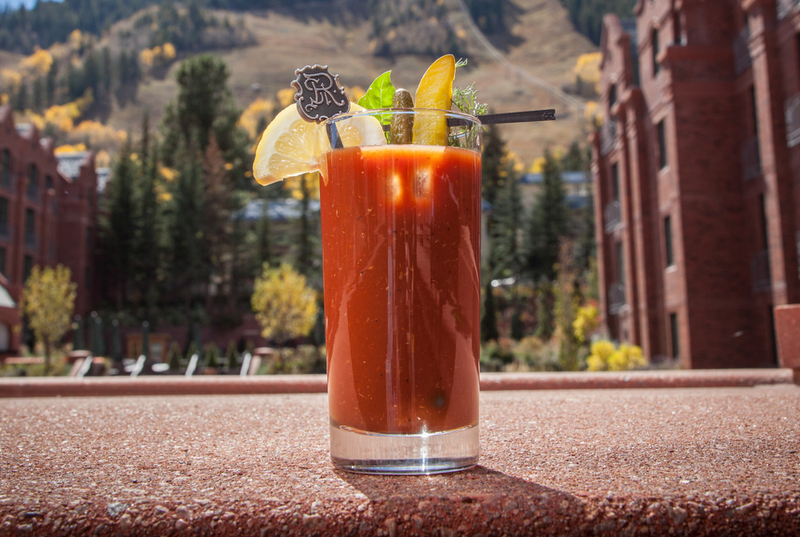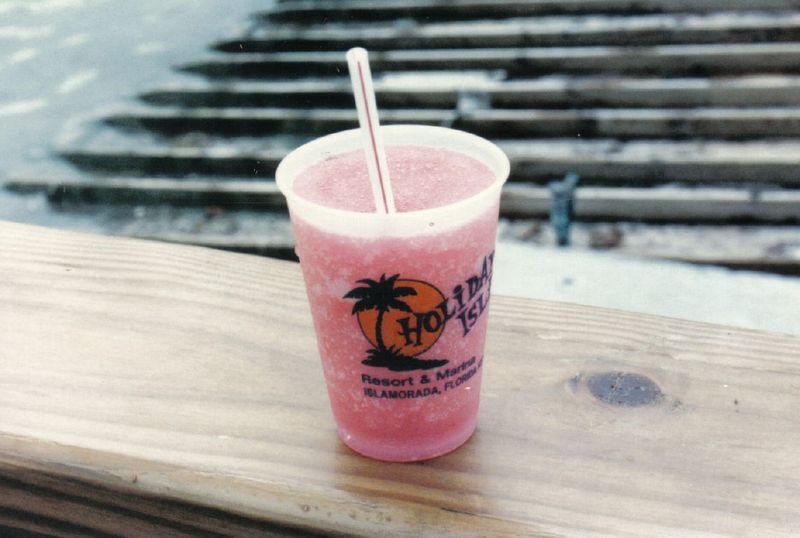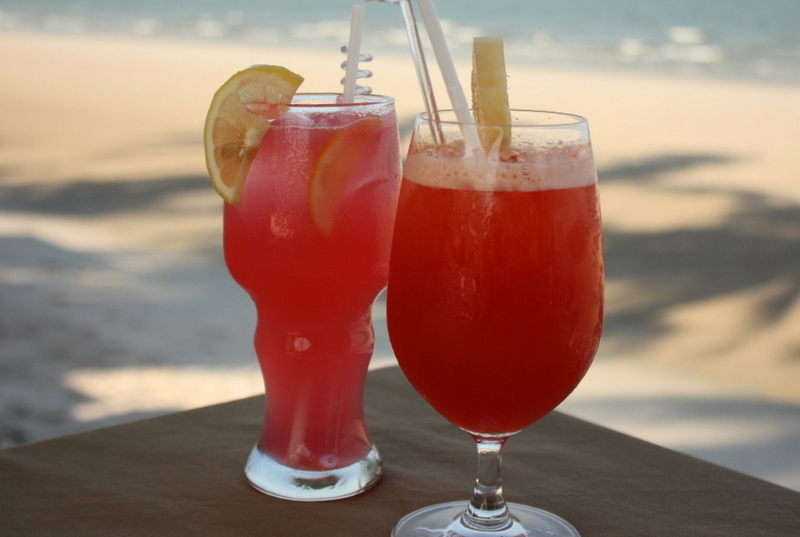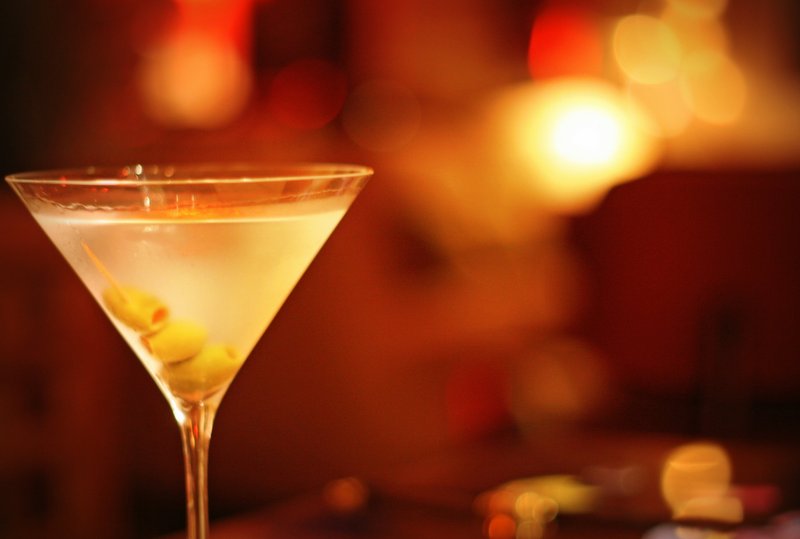Not sure about you, but for us, one of the great beauties of a hotel stay is coming "home" after a full day and night of exploring a new city, hitting the hotel bar, and stumbling upstairs for a great night’s sleep. And it turns out that hotel bars have done much more throughout the years than simply supply their guests with nightcaps; many hotel bars have provided the backdrop for important moments in cocktail history (or cocktail folklore, at least). So here we bring you the fascinating hotel origin stories of a handful of classic cocktails.
Bloody Mary
The St. Regis Aspen Resort
To whom do we owe our eternal gratitude for improving brunches everywhere, for all of time? There are a few (hotly debated) theories, but they all involve a man named Ferdinand “Pete” Petiot. “Most cocktail historians agree that the original concoction was invented by Petiot in the early 1920s, at Harry’s New York Bar in Paris,” says Parker Boase, a co-founder of Brooklyn-based mixology school Liquid Lab NYC. “The original concoction was just vodka and tomato juice and was called the Bucket of Blood.” (Wouldn’t you love to walk past a restaurant chalkboard on the sidewalk announcing “Unlimited Buckets of Blood”?) Petiot tinkered with the vodka-and-tomato-juice recipe, adding Worcestershire sauce, salt, pepper, and cayenne until it reached zesty perfection.
Another version of the story puts Petiot 3,600 miles from Paris, at the St. Regis Hotel New York‘s King Cole Bar. Here, Petiot’s initial name for his drink — Bloody Mary — was considered too gauche for the St. Regis’s classy regulars, so it was given the more innocuous moniker of Red Snapper. The Bloody Mary is the luxe hotel chain’s signature cocktail to this day, with different St. Regis locations around the world putting their own regional spin on the recipe. (For example, the St. Regis Aspen Resort crafts its Downhill Snapper with a local potato-based vodka, basil, and muddled dill.) “Today, we see such bold garnishes as pickled green beans, okra, shrimp, wasabi — even beef jerky,” says Boase.
Place of Origin:
Negroni
https://www.instagram.com/p/BGuzYFWwhfd/
This classic dark-red nightcap has an usually blue-blood beginning. One day about 100 years ago, an Italian count by the name of Camillo Negroni decided that his standard Americano (Campari, vermouth, club soda) simply wouldn’t suffice. (Allegedly there was a beautiful lady involved that he wanted to impress.) He asked the bartender at Florence‘s Hotel Baglioni to swap out the club soda for gin, inadvertently creating the namesake drink. “Replacing the club soda with gin not only boosts the alcohol content, but also adds aromatics and complexity,” Jason Jeffords III, beverage director at NYC’s The Ribbon, explains.
Fast forward nearly a century, and the Negroni anchors what Jeffords calls the “three-ingredient stirred cocktail category” (which includes the Sidecar, Old Fashioned, Dirty Martini, Manhattan, and Boulevardier). “These are the most respected and well-known cocktails,” says Jeffords. “Today, you can walk into any bar in America and order a Negroni.”
Place of Origin:
Sazerac
https://www.instagram.com/p/BJeEBCfBjgy/
The Sazerac’s origin story is as complex as its flavor. Most accounts begin in the 1840s, when a Haitian-born pharmacist in New Orleans named Antoine Amedie Peychaud invented an alcohol-based, good-for-what-ails-you panacea — the charmingly vintage, paper-wrapped Peychaud’s Bitters that is now stocked in pretty much every liquor store on the planet. The proprietor of the confusingly named Merchants Exchange Coffee House (a bar) then began mixing Peychaud’s Bitters with a French brandy called Sazerac de Forge et Fils — et voila! — cocktail magic was made. Merchants Exchange was renamed Sazerac House (probably as much for clarity’s sake as smart marketing), and then Sazerac Bar when it relocated to the Roosevelt Hotel in 1949. The grand Sazerac Bar, which reopened along with the rest of the hotel in 2009 after years of post-Katrina renovations, remains an ideal backdrop for sipping the classic French Quarter creation.
Rum Runner
In the 1950s, a Holiday Isle bartender found he had the sort of problem that it seems only a beach hotel bar in Florida Keys could have: too much rum! Yes, the bar’s pantry was overloaded with excess rum, and a rum delivery was on its way. So “Tiki John” did what any good Florida-Keys-beach-hotel-bartender would do, and whipped up a drink that would gobble up the rum surplus and keep the clientele sufficiently tippled. Today, the rum runner is practically as key a player for the island’s laid-back, laissez-faire flow as its year-round warmth and beautiful, calm waters.
Planter’s Punch
In “Casino Royale,” James Bond specified that he wanted his dry martini made from “three measures of Gordon’s, one of vodka, half a measure of Kina Lillet…a large thin slice of lemon peel.” Perhaps with this one exception, drink recipes aren’t carved in stone. Neither — for that matter– are the backstories of certain cocktails. Case in point: It’s commonly thought that the powerful, rum-based Planter’s Punch was invented at Charleston‘s Planter’s Hotel, a favorite overnight for the region’s rice-farming elite. But most cocktail experts say that the super-sweet Southern standby actually originated in Jamaica (which, coincidentally, is where Ian Fleming wrote “Casino Royale”). The ingredients and their proportions have also been disputed since the turn of the last century. What is certain is that Planter’s Punch is a sure-fire way to beat the intense Southern heat.
Dry Martini
Speaking of James Bond, there is perhaps no more iconic cocktail than the martini. New York City’s Knickerbocker Hotel, which was opened by John Jacob Astor IV in 1906, claims that its one-time bar manager — Martini di Arma di Taggia — invented the drink in 1912 (though a conflicting theory places the martini’s source in Gold Rush-era San Francisco). Regardless, the hotel bar has plenty of documented glamour going for it: John D. Rockefeller and his Wall Street crew were regulars, and F. Scott Fitzgerald made it the setting for a scene in “This Side of Paradise” (drinks ordered in said scene: “Rye high,” a “Bronx,” and a “bromo-seltzer”). The Beaux-Arts hotel and New York City landmark reopened in 2015; its rooftop terrace and bar has spectacular views and an impressive cocktail list — headed by a martini made from Tanqueray No. Ten gin, dry and red vermouths, and bitters.
Place of Origin:
Related Links:
- 10 Awesome Boozy Travel Experiences in the U.S.
- 9 Amazing Airport Bars Around the World
- The 12 Best Boozy, Adults-Only, All-Inclusive Hotels
All products are independently selected by our writers and editors. If you buy something through our links, Oyster may earn an affiliate commission.






